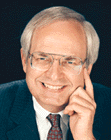|
|
||||||||||||||||||
 |
 |
|||||||||||||||||
 |
||||||||||||||||||
|
|
|||||||||||||
Measurement, the foundation of quality management, is by far the hardest part of quality. The importance of measurement has been emphasized by scientists, engineers and managers for many years. We are all familiar with the great quotes such as Galileo Galilei's, "Measure what can be measured, and make measurable what cannot be measured." Or the common phrases in business today: "We cannot manage what we cannot measure," and "Be careful what you measure because that is what you are going to get." Perhaps the clearest statement about the importance of measurement is Lord Kelvin's: "When you can measure what you are speaking about, and express it in numbers, you know something about it; but when you cannot measure it, when you cannot express it in numbers, your knowledge is of a meager and unsatisfactory kind. It may be the beginning of knowledge, but you have scarcely, in your thoughts, advanced to the stage of science." Just how hard it is to create new, meaningful measurements is obvious from the fact that new measurements have often created immortality for the inventor. In our physics or engineering classes, we were exposed to many of these: Roentgen, Ohm, Hertz, Volt, Ampère, Kelvin, Fahrenheit and Celsius. Ted Libbey of National Public Radio tells the story how in 1815, German inventor Johann Nepomuk Maelzel perfected the mechanism for the metronome. This simple device enabled composers for the first time to clearly and unambiguously indicate tempo. One of the first to use this new device was Ludwig van Beethoven, who relied on it for tempo markings in his Ninth Symphony. This precision measuring device is still manufactured according to its original specifications. Good measures and the sensors with which to make the measurement may take years to develop. Because creating the right measurement can be difficult, we need guidelines on how to proceed. The first principle: Never invent when you can copy measures others are using. The good news is that thousands of other organizations have faced most of the same needs that you have. The right way to measure something most likely already has been discovered. In some fields, such as finance, many measures have been well-documented, are taught in business schools and accounting courses, and have very clear procedures for exactly how to measure and report most of the important financial facts. Only when we venture into new territory, such as activity-based costing, do we find the going tough. The second principle: Never invent when you can modify. Many times we cannot find the exact measure we need for a particular quality parameter, but we can find a measurement for a similar parameter. With a little effort, we can modify the existing measurement to make it useful for our new need. The third principle: When you absolutely must create a new measure, get ready for some hard work. I remember one critical measurement that took two physicists and two statisticians nearly three years to develop. When creating a new measurement, it is essential to first ask what action will be taken based on the measurement. Only by knowing exactly how a measurement will be used can we logically start thinking about how to measure. Only after we know exactly what information we really need to make the correct decision and what action we will take based on this information should we start creating a measurement. Then we can answer some basic questions: Will attributes data be enough? Do we simply need a yes/no, defective or nondefective, or go/no-go type of decision? Or do we need variables data, a measurement on a continuous scale? What risks do we want to minimize? How important is it that we detect a problem if the problem truly exists? How serious is a false alarm? How often do we need to make this measurement? After we have answers to these basic questions, we can start to more carefully define our measurement plan and determine what accuracy and precision we need, how frequently we will measure, what sample size we will need and how we will analyze and present the final information and to whom. We also need to clearly define who is responsible for creating the measurement plan and assuring it works as intended, and who is responsible for managing the plan on an ongoing basis. So far, we have only discussed simple measurements of one critical parameter. We haven't even touched on the harder questions of how to combine measurements to get a clearer picture of the quality of an entire product or service. Those topics will have to wait for a later article. About the author A. Blanton Godfrey is chairman and CEO of Juran Institute Inc. at 11 River Road, Wilton, CT 06897. © 1997 Juran Institute. For permission to reprint, contact Godfrey at fax (203) 834-9891 or e-mail agodfrey@qualitydigest.com.
|
